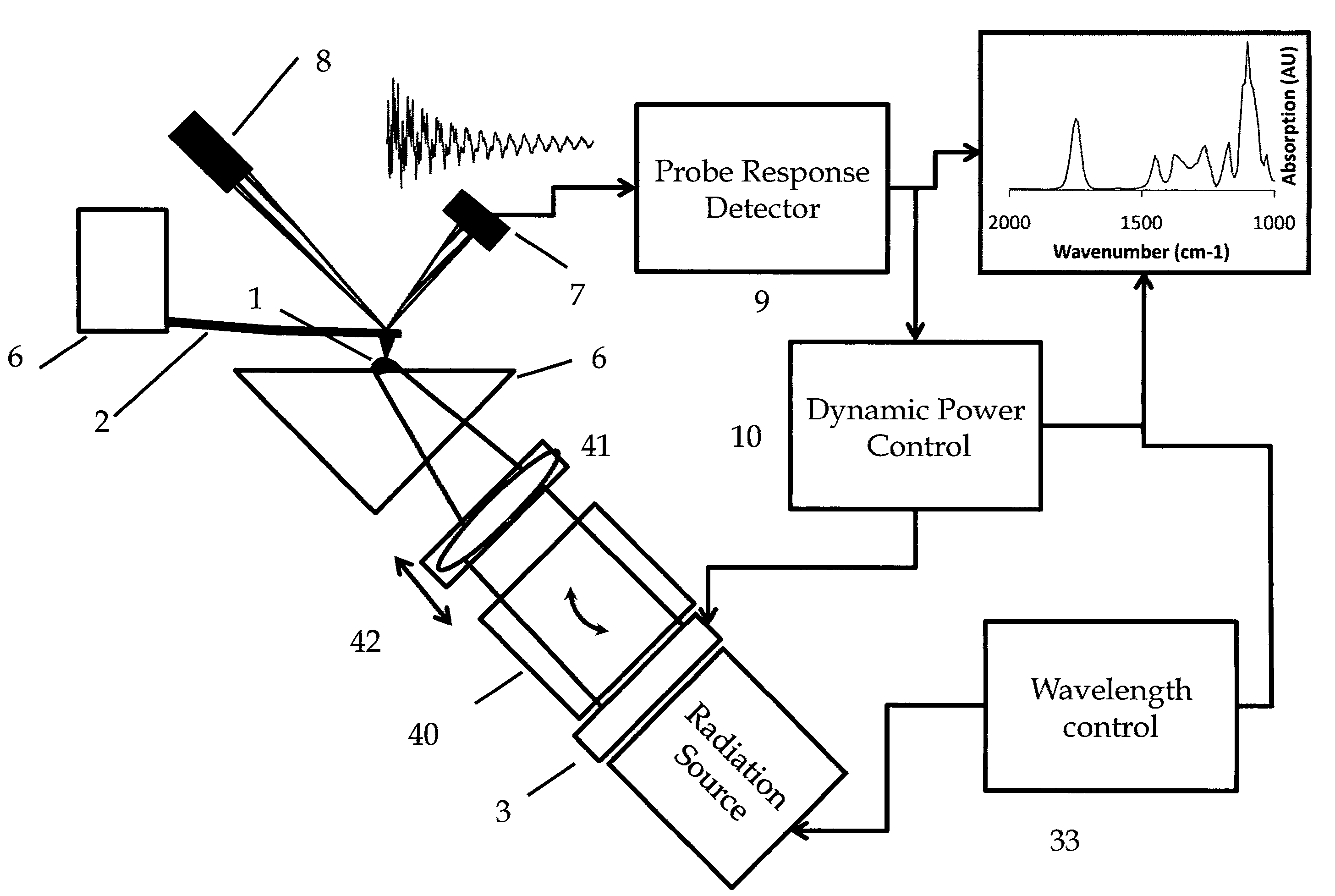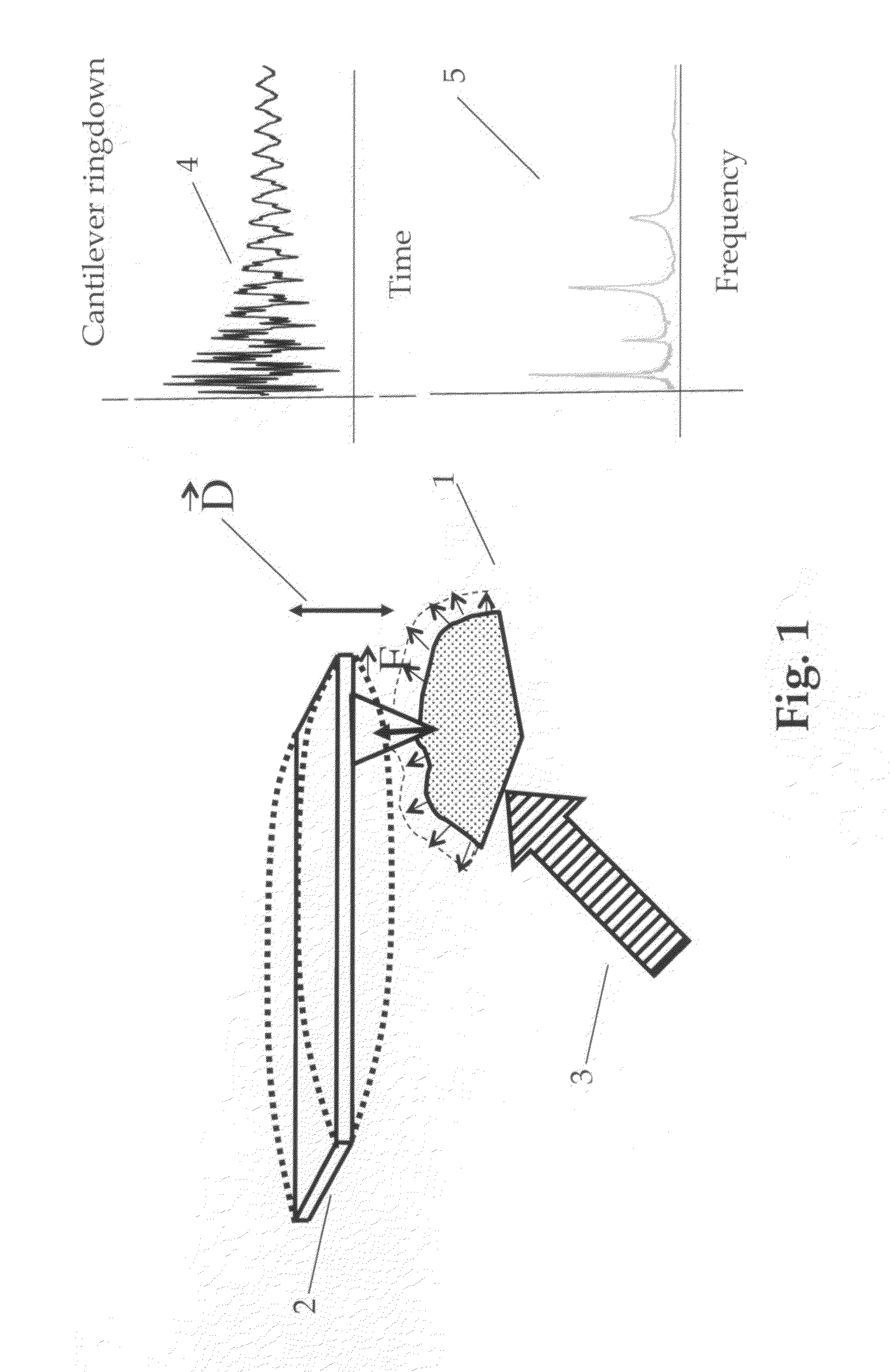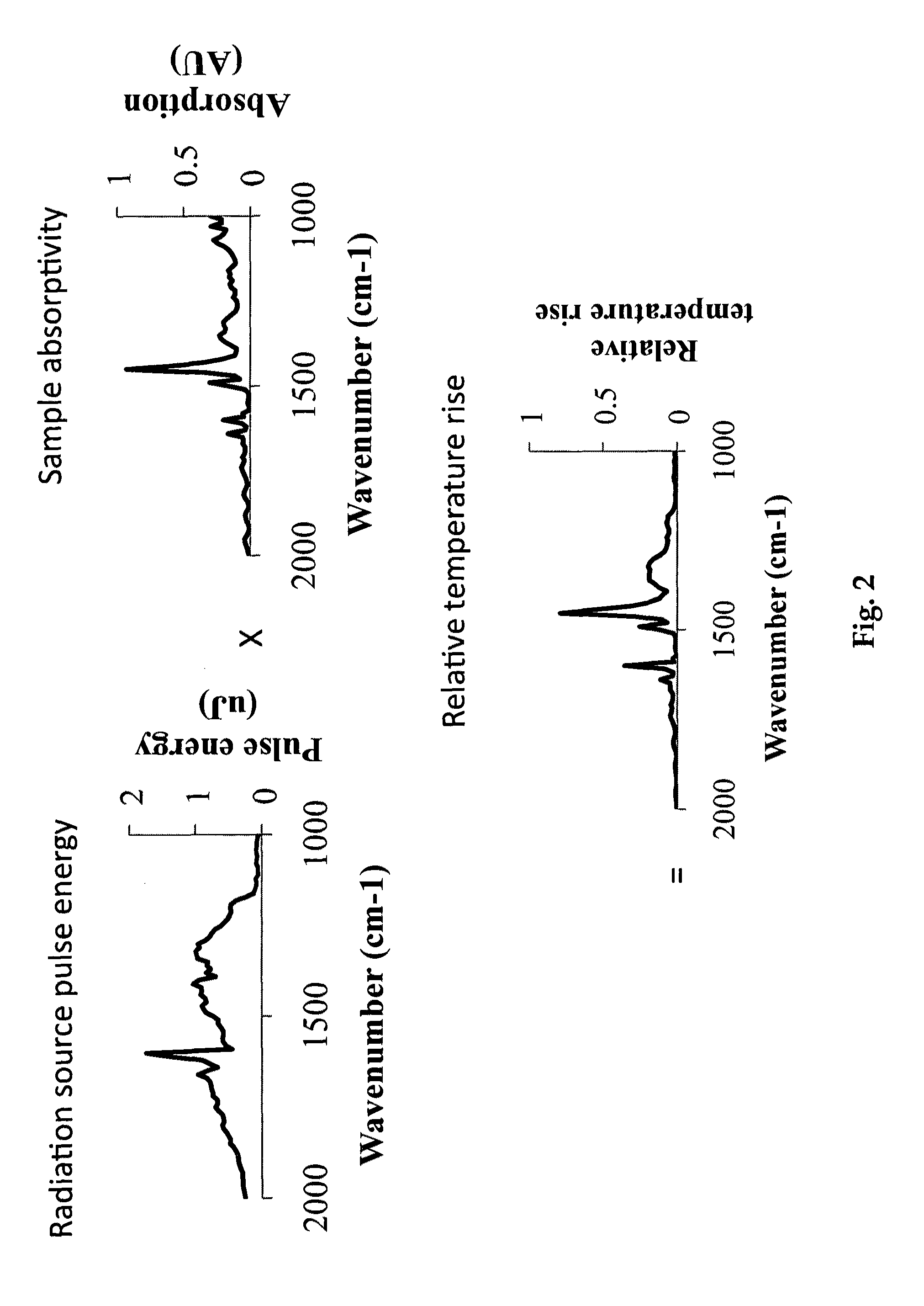Dynamic power control, beam alignment and focus for nanoscale spectroscopy
a nano-scale spectroscopy and beam alignment technology, applied in the field of high-localized infrared (ir) spectra, can solve the problems of limited optical diffraction, high cost, and high cost of ir spectroscopy and microscopy, and achieve the effect of maximizing the respons
- Summary
- Abstract
- Description
- Claims
- Application Information
AI Technical Summary
Problems solved by technology
Method used
Image
Examples
Embodiment Construction
[0023]Referring to FIG. 4 the elements required to practice the invention are shown. Sample 1 is probed by an AFM with a cantilever probe 2. The interaction between the probe and sample may be contact, non-contact, near contact, intermittent contact and / or tapping or other method of interaction that generates a measurable probe response as a function of the interaction. In one embodiment an optical lever arm probe motion sensor comprising a source 8 and photodetector 7 interfaced to Probe Response Detector 9 measures a response of the AFM cantilever 2. The measured probe response may be deflection, motion, oscillation, phase or other properties of the mechanical response of the probe. Many techniques can be employed to measure the cantilever motion. For example AFMs have been built where the cantilever deflection is performed by electron tunneling, capacitive detection, interferometry, magnetic, piezoelectric, piezoresistive and thermal sensing, for example. Any mechanism that detec...
PUM
 Login to View More
Login to View More Abstract
Description
Claims
Application Information
 Login to View More
Login to View More - R&D
- Intellectual Property
- Life Sciences
- Materials
- Tech Scout
- Unparalleled Data Quality
- Higher Quality Content
- 60% Fewer Hallucinations
Browse by: Latest US Patents, China's latest patents, Technical Efficacy Thesaurus, Application Domain, Technology Topic, Popular Technical Reports.
© 2025 PatSnap. All rights reserved.Legal|Privacy policy|Modern Slavery Act Transparency Statement|Sitemap|About US| Contact US: help@patsnap.com



